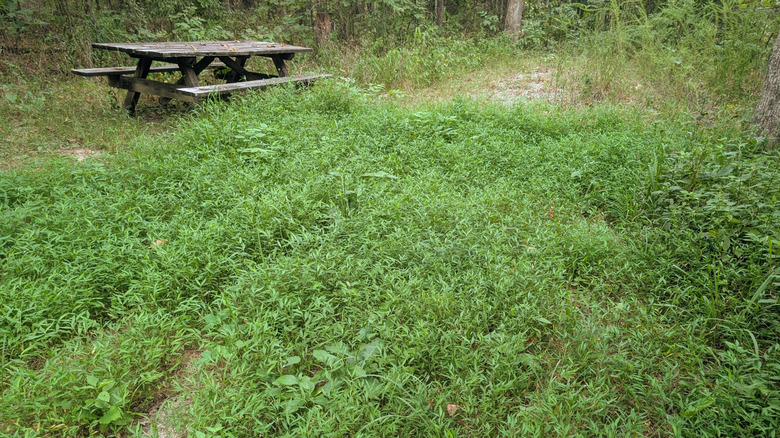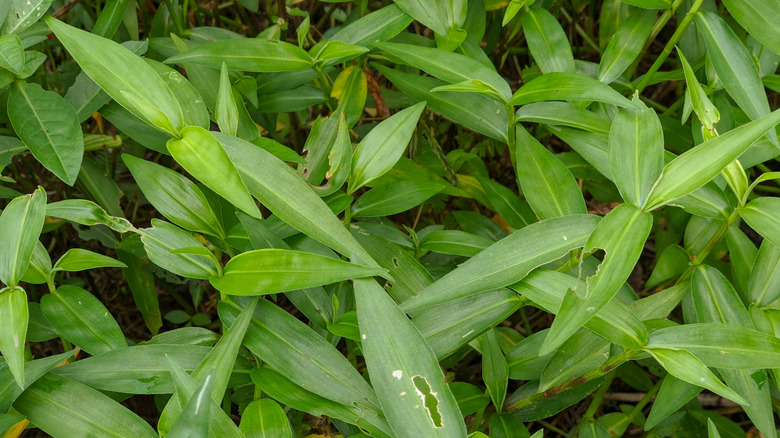How To Remove Japanese Stiltgrass Weeds From Your Yard
One of the most aggressive invaders to hit lawns, flower beds, and natural areas across the eastern United States is Japanese stiltgrass (Microstegium vimineum). This fast-spreading annual thrives in moist, dark areas where other grasses find it difficult to grow, forming dense mats that suffocate native plants and attractive turf. Once established, it can outcompete almost everything in its path by spreading swiftly through thousands of small seeds and creeping stems, which take root when they come into contact with the soil. You can remove Japanese stiltgrass from your yard with the right timing and a steady plan that combines hand-pulling, mowing, and the use of well-timed preemergent herbicides.
Stiltgrass tolerates deep shade and soil with low fertility, allowing it to easily dominate disturbed areas, such as ditches, woodland edges, and garden beds. It germinates early in spring — weeks before crabgrass — then flowers and sets seed in late summer through fall, giving it a long growing window to establish. It's one of the most important weeds to pull in late summer and early fall. Fortunately, its shallow roots make it easy to pull up, but the real challenge lies in its persistence.
Managing it isn't a one-time task. Because stiltgrass seeds can linger in the soil for up to five years, new plants often emerge even after a thorough cleanup. What works in early summer may fail later in the season, as plants mature and begin to seed. Scientists have even called on Wisconsin homeowners to help stop the spread of this highly invasive plant, so understanding its growth stages and acting at the right moment is the best way to control it effectively.
The most effective way to remove Japanese stiltgrass
Eradicating Japanese stiltgrass requires a combination of timing, consistency, and the right tools. Japanese stiltgrass invades USDA Zones 5 through 9, and for small infestations, hand-pulling is the simplest and most effective method — especially when done before flowering, typically from July through early September. Mowing can help, but timing is crucial. Cutting too early encourages regrowth, while mowing too late (after flowering) will only help to disperse the seeds. Therefore, you want to consider mowing just before seed set in late August or early September to prevent new seed formation and reduce populations the following year.
For better eradication when the weed continues to persist, apply a preemergent herbicide such as pendimethalin (which is also one of the best crabgrass weed killer products to consider), trifluralin, or oryzalin in early spring, to block seedlings from emerging. Low-dose glyphosate or glufosinate can provide some control in regions where only stiltgrass is present, but postemergence herbicides, such as clethodim or fluazifop-P-butyl, can be used mid-season where there are also existing desirable plants. Pay close attention to the label's instructions before use, and don't spray on plants you want to keep.
Once areas of your garden are cleared of stiltgrass, replant with hardy, shade-tolerant ground covers to help reclaim your yard. Be sure these completely cover shaded beds to keep sunlight from getting to stiltgrass seeds that might be hiding in the soil. This should help stop outbreaks in the future.

